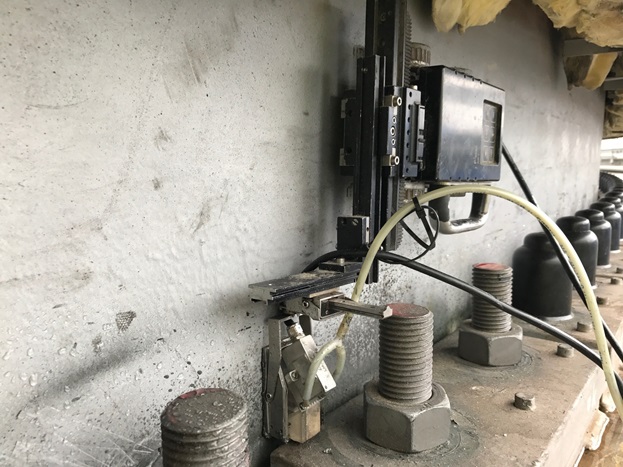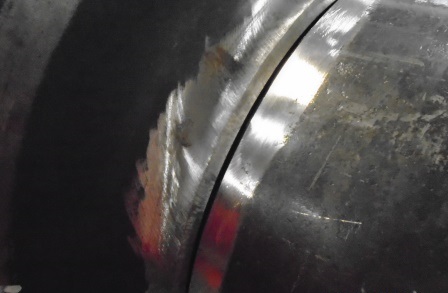Best Practices for Effective Tank Welding Inspection Processes
Best Practices for Effective Tank Welding Inspection Processes
Blog Article
A Comprehensive Overview of Storage Tank Welding Examination Standards and Methodologies for Improved Weld High Quality and Efficiency
The value of welding assessment requirements in the manufacturing of containers can not be overstated, as they work as the backbone for guaranteeing weld honesty and functional reliability. Various assessment techniques, including aesthetic analyses and advanced non-destructive screening techniques, are critical in identifying possible defects that can endanger efficiency. Furthermore, sticking to regulative requirements not just improves weld top quality yet likewise minimizes the threat of costly failings. As we discover the nuances of these approaches, it ends up being crucial to think about exactly how a systematic technique can revolutionize present techniques and cause significant improvements in outcomes.
Importance of Welding Evaluation Standards

Welding inspection requirements incorporate a series of criteria, including material specifications, welding treatments, and credentials of workers entailed in the welding process. By enforcing these requirements, companies can systematically determine and fix possible issues, thereby reducing the likelihood of expensive fixings or disastrous failings. Strenuous inspection practices promote a society of liability and precision, encouraging welders to keep high degrees of craftsmanship.

Usual Welding Assessment Strategies


Ultrasonic Checking (UT) is one more prevalent strategy, using high-frequency audio waves to identify inner flaws that might not be noticeable externally. This method is especially effective for identifying voids or additions within the weld metal. Magnetic Bit Checking (MT) is likewise extensively made use of, particularly for ferromagnetic materials, as it reveals surface and near-surface flaws through the application of magnetic areas and ferrous fragments.
Additionally, Liquid Penetrant Testing (PT) detects surface-breaking issues by using a penetrant to the weld and after that using a developer to draw out the penetrant. Each of these methods adds to a comprehensive inspection approach, ensuring that welds satisfy the rigid top quality requirements required in storage tank construction.
Regulative Criteria and Compliance
Regulative requirements and conformity are important components in making sure the safety and reliability of welded frameworks in tank construction - Tank Welding Inspection. These standards serve to develop minimum requirements for product buildings, welding treatments, and examination practices, thus reducing the risk of structural failings and boosting general efficiency
Key companies, such as the American Culture of Mechanical Engineers (ASME) and the American Welding discover this Culture (AWS), give guidelines that are widely adopted in the industry. Conformity with these standards not only makes certain adherence to ideal practices however additionally fulfills legal and legal commitments, protecting the rate of interests of stakeholders.
Governing bodies often mandate adherence to certain codes, such as ASME Code Area IX for welding certifications and API 650 for welded storage tanks. These codes describe needs for welding strategies, certifications of employees, and testing methods to verify weld integrity.
Regular audits and assessments are essential to preserving compliance, as they help recognize discrepancies from developed requirements. Non-compliance can result in significant fines, project hold-ups, and safety and security hazards. Therefore, a robust understanding of regulative standards and a commitment to conformity are extremely important in achieving high-grade and resilient welded tank frameworks.
Non-Destructive Testing Approaches
How can the integrity of bonded frameworks be guaranteed without creating damage? Non-destructive screening (NDT) methods supply a robust solution, making it possible for examiners to evaluate weld quality without jeopardizing the product - Tank Welding Inspection. Among one of the most common NDT strategies are ultrasonic screening (UT), radiographic testing (RT), look at this website magnetic fragment screening (MT), and dye penetrant testing (PT)
Radiographic testing entails passing X-rays or gamma rays via the weld, creating photos that disclose structural flaws such as cracks or voids. This technique is vital for analyzing the stability of complicated welds.
Magnetic bit testing is suited for ferromagnetic materials, where magnetic areas expose surface and near-surface stoppages. Color penetrant testing makes use of a liquid color to highlight surface-breaking flaws, making it an effective method for non-porous products.
Each of these NDT methods has unique benefits, enabling thorough analyses customized to specific materials and welding processes. By applying these methods, sectors can make certain the integrity and security of bonded frameworks, eventually boosting general efficiency.
Enhancing Weld Top Quality Through Assessment
Reliable inspection plays a critical function in improving weld quality, functioning as a crucial checkpoint in the fabrication procedure. By recognizing prospective flaws early, inspections mitigate the danger of compromised structural integrity and make sure compliance with market criteria. Utilizing a combination of visual assessments, non-destructive screening (NDT) methods, and mechanical evaluations, inspectors can identify problems such as porosity, cracks, and insufficient blend.
Applying a robust evaluation procedure not just improves the overall high quality of welds yet also promotes a society of liability among welders and makers. Normal training and qualification of assessment personnel guarantee that they are equipped with the necessary abilities to acknowledge and deal with potential problems properly. This positive strategy minimizes rework and connected prices, ultimately adding to forecast efficiency.
In addition, comprehensive documents of inspection searchings for supplies beneficial insights into recurring issues, assisting in continual improvement in welding techniques. By leveraging advanced technologies, such as automated ultrasonic testing or digital radiography, weld top quality can be improved through much more exact analyses. In verdict, an extensive assessment process is indispensable in accomplishing top quality welds, making sure security, reliability, and longevity in storage tank fabrication.
Conclusion
In final thought, the implementation of rigorous container welding inspection requirements and methodologies is crucial for making sure weld honesty and performance. By making use of a mix of aesthetic evaluations, non-destructive screening approaches, helpful resources and adherence to regulatory requirements, organizations can properly recognize and minimize possible issues.
Report this page